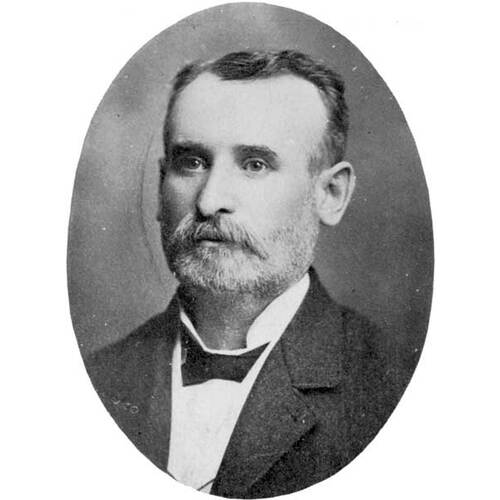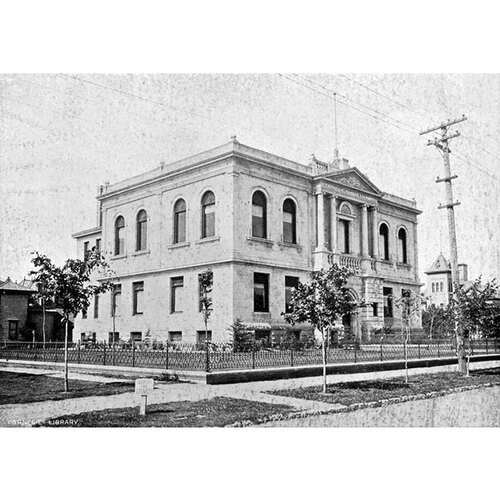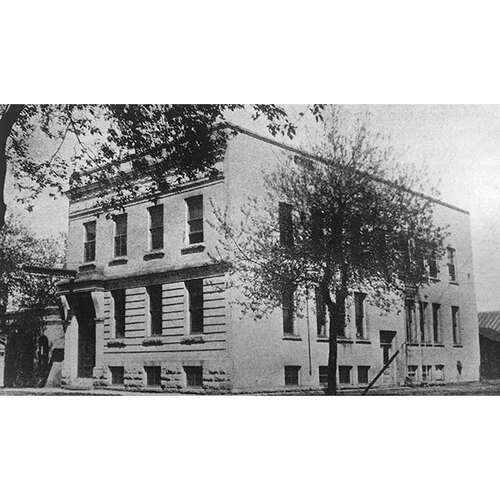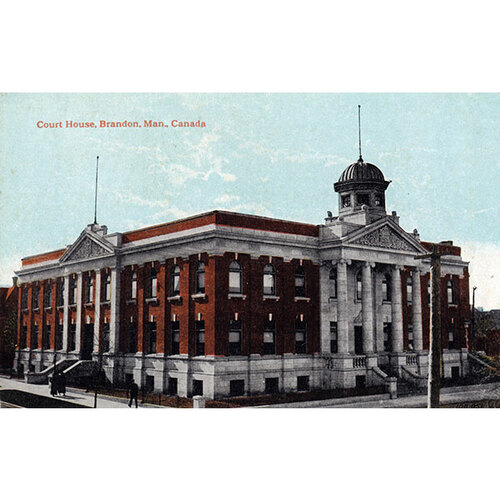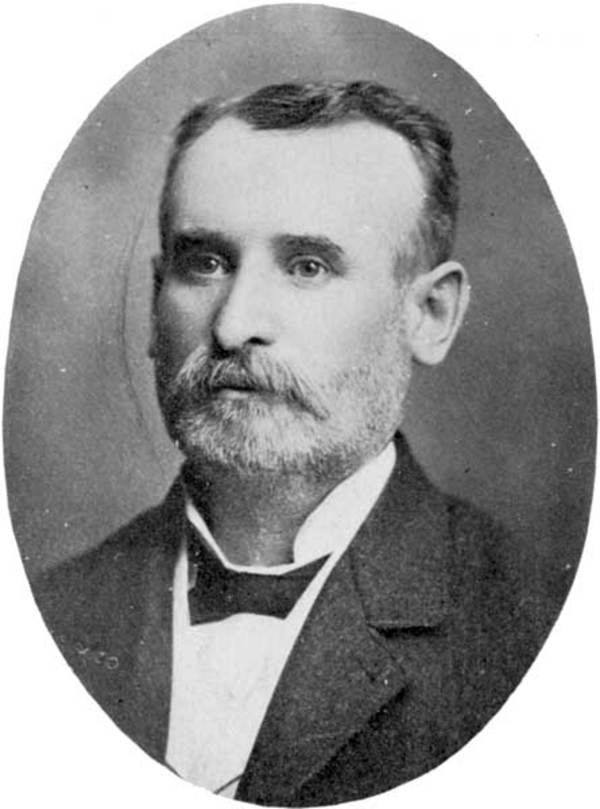
Source: Link
HOOPER, SAMUEL, sculptor, businessman, and architect; b. 1851 in Hatherleigh, England, second of the five sons of John Hooper, a tailor, and Susannah Weeks; m. 1872 in London, Ont., Jane Ferguson Simpson of Edinburgh, and they had several children, of whom two sons and two daughters survived to adulthood; d. 19 Oct. 1911 in London, England, and was buried in St John’s cemetery, Winnipeg.
As a child, Samuel Hooper attended school in England. In 1869 he emigrated with his family to London, Ont., where for three years he was apprenticed in a marble and stone works. In 1878 he returned to England to study architecture in the office of his uncle, who was surveyor of the Duchy of Cornwall.
Hooper sailed back to Canada in 1880 and settled in Emerson, Man., working as a stone carver and designer of monuments. In January 1881 he moved to Winnipeg and became a partner of David Ede, owner of a monument firm. According to a contemporary, Ede and Hooper built up their business despite “disadvantages considering the healthy climate in which they are located and the scarcity of deaths therein.”
In 1884 Hooper purchased Ede’s interest in the firm. Subsequently, he opened Hooper’s Marble Works, which by 1904 was incorporated as Hooper’s Marble and Granite Company. A subsidiary, Hooper, Houkes and Company, formed with Albert Lee Houkes, was described in 1906 as “one of the largest manufacturers and dealers in monuments and interior work in the entire province,” but by the following year it no longer existed.
From the 1880s Hooper also worked as an architect, creating monuments, commercial buildings, and residences throughout Manitoba. By 1906 his son John practised with him in the firm Hooper and Hooper. His best-known monuments commemorated the role of the 90th (Winnipeg) Battalion of Rifles, called the Little Black Devils, in the North-West rebellion [see Louis Riel*] (1885), Queen Victoria (1898), the battle of Seven Oaks in 1816 [see Robert Semple*] (n.d.), and Premier John Norquay* (1889–90). His commercial buildings in Winnipeg included the Cass Block (1900), the Western Building (1901), and the Holman Meat Market (1903). He also designed homes for Thomas Sharpe*, mayor of Winnipeg (c. 1903), and Robert Rogers*, minister of public works for Manitoba (c. 1906).
On 6 June 1904 Hooper was appointed Manitoba’s first provincial architect by the Conservative government of Rodmond Palen Roblin*. In this role, he designed government-funded structures, oversaw additions and renovations to existing buildings, and signed tenders for the Department of Public Works. Hooper was employed on contract during his first year; in 1905 he received an annual salary of $1,800, which would rise to $2,500 by 1910. During his tenure the provincial architect’s office expanded from six draftsmen and two clerks in 1908 to seventeen draftsmen, one clerk, and one inspector in 1911.
While provincial architect, Hooper executed the plans for over 30 public buildings constructed in Winnipeg, Brandon, Portage la Prairie, and towns in southern Manitoba – land titles offices, telephone exchanges, normal schools, agricultural colleges, municipal buildings, jails, court houses, asylums, and homes for the chronically ill. He designed in the eclectic style. By the turn of the century, this was the ubiquitous architectural form in western Canada. Some of his buildings, such as St Mary’s Academy and St Joseph’s Orphanage, Winnipeg, with their dormer windows and mansard roofs, were drawn according to Second Empire principles. Other work reveals his interest in neo-classicism, reflective of the Georgian period. These public buildings, such as the land titles office, the Normal School, and the Carnegie Library in Winnipeg, present columns, cupolas, fanlights, carved pilasters, and keystones exhibiting his particular skill in cut white stone and marble work.
In 1893 Hooper had attended the Columbian exposition in Chicago and had no doubt been influenced by this “Eclectic Show of Power.” His buildings, like many of those in Chicago, made use of white terracotta, white marble and granite, and white limestone as accents to buff or red brick facings.
By 1911 Hooper was a recognized architect and businessman, serving his profession not only as provincial architect but also as vice-president of the Royal Architectural Institute of Canada. He was known in the community as a freemason and as a parishioner of St John’s (Anglican) Cathedral. In 1911, because of poor health, he travelled to England to seek relief from bronchitis and asthma, but died soon after his arrival. His body was transported back to Winnipeg for interment.
The public buildings designed by Samuel Hooper reflected the optimism and enthusiasm of a province in its early stages of development. Many of them still mark the landscape as a reminder of his skill and craftsmanship in this period of spectacular growth.
Details concerning Samuel Hooper were supplied to the author in her interview of 25 June 1980 with Margaret Blanchard, a granddaughter of the subject. PAM, GR 1606; GR 1620. Manitoba Free Press, 6 Dec. 1906; 2 May, 12 Sept. 1908; 20 Oct. 1911. Winnipeg Telegram, 19 Oct. 1911. Winnipeg Tribune, 22 July 1969. A. F. J. Artibise, Winnipeg: a social history of urban growth, 1874–1914 (Montreal and London, 1975). George Bryce, A history of Manitoba; its resources and people (Toronto and Montreal, 1906). Canadian men and women of the time (Morgan; 1912). Directory, Winnipeg, 1881–1911. “The gateway to the granary of the British empire,” Construction (Toronto), 3 (December 1909): 54–83. “Hospital for the Insane, Brandon, Manitoba,” Construction, 6 (April 1913): 140–44. Man., Dept. of Finance, Public accounts of the province of Manitoba (Winnipeg), 1903–11; Dept. of Public Works, Annual report (Winnipeg), 1904–11; Public buildings erected and improved by the government of Manitoba during the years 1900–1906 (Winnipeg, 1906). Pioneers of Man. (Morley et al.). F. H. Schofield, The story of Manitoba (3v., Winnipeg, 1913). Winnipeg, Manitoba, and her industries (Chicago and Winnipeg, 1882).
Cite This Article
Kathryn A. Young, “HOOPER, SAMUEL,” in Dictionary of Canadian Biography, vol. 14, University of Toronto/Université Laval, 2003–, accessed April 14, 2025, https://www.biographi.ca/en/bio/hooper_samuel_14E.html.
The citation above shows the format for footnotes and endnotes according to the Chicago manual of style (16th edition). Information to be used in other citation formats:
| Permalink: | https://www.biographi.ca/en/bio/hooper_samuel_14E.html |
| Author of Article: | Kathryn A. Young |
| Title of Article: | HOOPER, SAMUEL |
| Publication Name: | Dictionary of Canadian Biography, vol. 14 |
| Publisher: | University of Toronto/Université Laval |
| Year of revision: | 1998 |
| Access Date: | April 14, 2025 |


